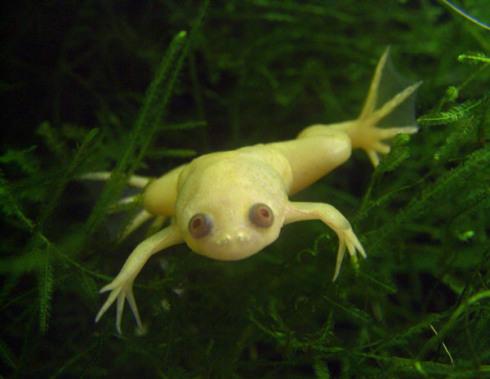
by Russ McSpadden / Earth First! News
Back in the 1950s African clawed frogs (Xenopus laevis) were imported to California by the pharmaceutical industry for pregnancy tests. The frogs, according to scientists, have a hormone system quite similar to humans. They ovulate in response to urine from a pregnant women. If one wanted to know if they were pregnant, the test went like this: a lab tech would inject a live female frog with serum or urine from a potentially pregnant woman. If the injection caused the frog to produce eggs within 24 hours, the results for pregnancy were positive. One frog might be injected over and over with the serum of hundreds of clients.
But as researchers developed more sophisticated blood tests, the clawed frogs were deemed unnecessary and many hospitals released them into ponds and canals throughout California where they have thrived for decades.
Now a research team from Standford University and San Francisco State University have linked them with the deadly Batrachochytrium dendrobatidis fungus which is responsible for the mass-death of vast numbers of amphibian species worldwide, contributing to the loss of entire species, and according to the LA Times, “one of the greatest-disease-caused losses of biodiversity in recorded history.”
“Until this report, there had been no conclusive evidence that [African clawed frogs] had been carrying the disease,” said a Stanford veterinarian who helped author the new report.
The amphibian extinction crisis–which already threatens nearly one half of all amphibian species with extinction and has driven more than 120 species to extinction in recent years–is something that probably doesn’t keep you up at night, but it should. Amphibians are vital to functioning ecosystems and their disappearance will reverberate up the food-chain.
But seriously, its not all grandma’s fault. Toxins, climate change, nonnative predators, over-collection, habitat destruction and other diseases also extract their countless pounds of amphibian flesh from the planet every year.

